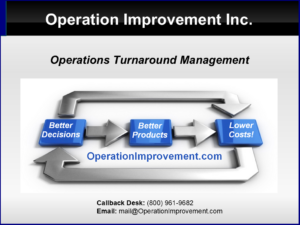Frame of Reference: The Rest of the Story
A few years ago, I did some consulting and training for a manufacturing company. Components of their products were made from metal castings with precision requirements tighter than one-thousandth of an inch.
The company struggled to meet these demanding product targets. Within a couple of weeks, I identified a fundamental error repeated across three areas.
As you read, look for the common thread in the three situations I investigated. Then ask yourself: “If I were the manager, what would I do differently?”
Blueprints
All of the rough castings were machined to ultimately comply with mechanical drawings (“blueprints”). After some research into the prints, I made an interesting discovery. Many of the prints had a common flaw.
Let me help you picture the situation. Imagine that a hole is to be drilled into an eight-inch-wide block. The blueprint calls for the hole’s center to be exactly four inches from the left edge and five inches from the right—on an eight-inch-wide block.
Visualize it. Do the math. You’ll notice the problem: the instructions are contradictory.
The drawing is ambiguous—there are two equally plausible locations for the hole.
Errors of this sort are avoided in drawings by measuring all dimensions from a single common reference point or surface. A single frame of reference means that everyone interprets blueprints and measurements in the same way.
Many of the engineering drawings contained these multiple reference point errors, and I brought this to the attention of management.
Now, if you were responsible for managing this company, what would you do?
Presort
I further researched the machining processes and found a work center composed of a long line of traditional machining workstations. Rough metal castings were first processed on workstation number one. Each subsequent workstation added one cut and finished parts were produced at the end of the line.
This pipeline machining design had tremendous potential to rapidly produce large volumes of product. Like an assembly line, once each piece of equipment was configured, production flowed through the line and all workstations ran in parallel until an order was complete.
The first machining work center was critical—it established a smooth, flat reference surface for all subsequent operations.
However, there was a problem. The finished parts varied significantly—some exceeded customer tolerances and had to be scrapped. A simple statistical analysis showed four distinct groups, which corresponded with a distinctive casting mark on each part.
Four different molds (“A, B, C, or D”) were used in casting the rough metal parts. Parts that came from mold “A” were very much like any other one from “A” but different from parts from mold “B”. The difference was small but sufficient to account for the end-of-line variance and scrap.
I proposed a simple modification to the workcenter: sort castings by mold immediately before machining workstation number one. Castings marked “A” would be processed, and then the cutting machines would be recalibrated before “B” parts would run. Each mold group—A, B, C, and D—would be machined as a batch with its peers.
We did an experiment. We tested the sorting-by-mold theory. Setup time was dramatically reduced! A first piece quality check came back without delay. Every part now left the first machining work center with a consistent reference surface, and the finished parts came out at the end of the machining line as the same and not as four flavors.
Now, after this little experiment succeeded, if it were your facility and your money, what would you do?
The Eight-Station Turntable
One work center featured a round turntable design. Seven stations with cutting tools were arranged around the table, with the eighth reserved for the operator to load and unload parts.
The operator would unload a finished part, load a fresh part, and then start the cycle. The table would rotate 45 degrees, and each of the seven machining stations would go to work on their respective parts.
The machine had a terrible reputation with the operators, and no one wanted to be responsible for setting it up for a customer order. After some investigation, I found out why.
The two stations with cutting tools on either side of the operator and the center of the table were designed to form a perfect 90-degree angle for reference and measurement. All placement of fixtures on the table and all positioning of the remaining five stations and cutting tools were to be made based on this objective and absolute frame of reference. The sequence of setup and positioning these fixtures and tools was critical!
It turned out that someone had unbolted and repositioned one of the critical reference stations in a trial-and-error attempt to set up the machine. The perfect right built into the workstation’s design of the workstation was broken, and an 89- or 91-degree angle had taken its place. It was now impossible to perform precision machining at this work center.
I recommended correctly repositioning the two critical stations relative to the center of the table, reestablishing the frame of reference for setup, and then I designed and shared a correct setup sequence for the fixtures and tools. (This required the machine manufacturer’s assistance and the use of precision laser measurement tools.)
So once again, if it were your responsibility, what would you do?
The Rest of the Story
Regarding the blueprints: The company decided to do nothing.
Regarding the new presort work center: The company decided to do nothing.
Regarding the machine damaged by an untrained setup operator: The company decided to do nothing and to leave the machine as it was; continuing to approximate a correct setup by trial and error.
If this is puzzling to you, a recent post on “X”, Scott Adams (https://x.com/ScottAdamsSays) sheds some light on this behavior. He noted that many times, people fall into a habit of evaluating a task by its effort rather than its reward. So true for all of us, unless we think!
The next time someone tells you, “We’ve got certifications—we tried Six Sigma, SPC, process management, measurement studies and more – and they didn’t help”; pause and dig deeper. Remember this “Frame of Reference” tale and ask for the rest of the story.
In manufacturing, ignoring root causes while expecting different results is wishful thinking. “If you continue to do what you always did, you’ll get what you always got.”
Copyright © 2025 Operation Improvement Inc. All rights reserved.





